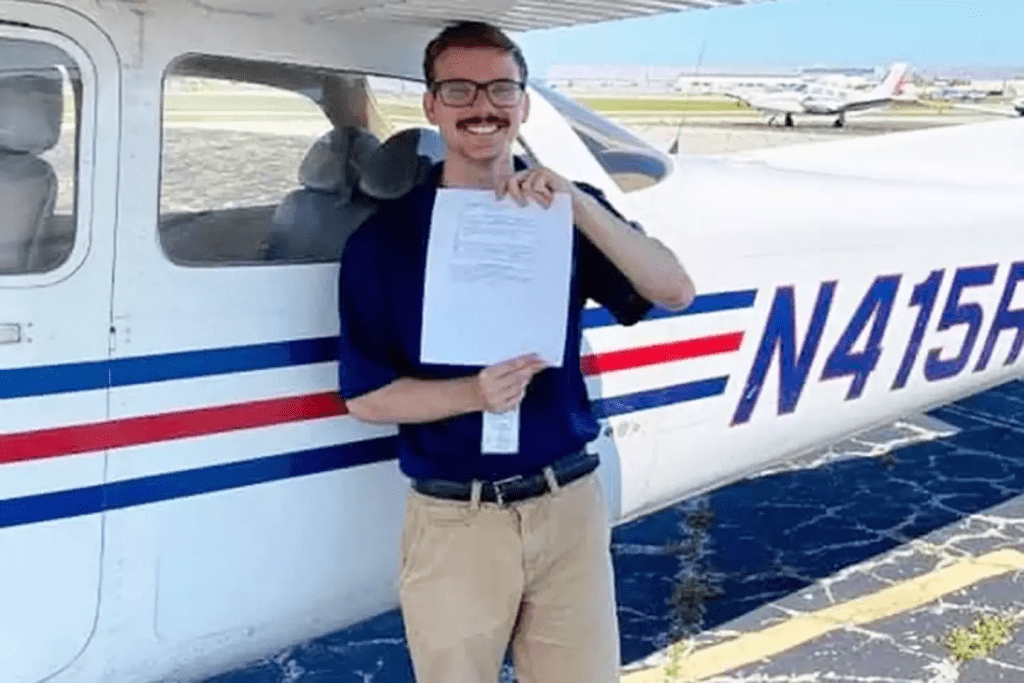The tragic mid-air collision between American Airlines Flight 5342 and a U.S. military Black Hawk helicopter has sent shockwaves across the nation. As investigators piece together the moments before the crash, new data from the plane’s black box recorder reveals that the pilots made a desperate, last-second attempt to pull the aircraft up in a bid to avoid disaster.
This devastating accident, which occurred on January 29, 2025, near Ronald Reagan Washington National Airport, marks the deadliest aviation disaster in the U.S. since 2001. The collision sent both aircraft plummeting into the Potomac River, with no survivors among the 60 passengers, four crew members, and three U.S. soldiers onboard.

Moments Before Impact: Pilots’ Last Effort to Avoid the Collision
At approximately 8:47 PM ET, as PSA Airlines Flight 5342, an American Airlines regional jet, descended toward Washington, D.C., it collided with a UH-60 Black Hawk helicopter that was conducting a training mission.
Data from the plane’s black box flight recorder indicates that Captain Jonathan Campos (34) and First Officer Samuel Lilley (28) made a split-second attempt to pull the aircraft up before impact.
“At one point very close to the impact, there was a slight change in pitch, an increase in pitch,” said Todd Inman, an official with the National Transportation Safety Board (NTSB) during a press conference.
This suggests that the pilots, in the final seconds, recognized the imminent danger and tried to avoid the crash. However, with the aircraft traveling at 140 mph, there was little time to correct course.
Conflicting Altitude Reports: Was the Helicopter Flying Too High?
One of the major questions surrounding this disaster is why the two aircraft crossed paths at the same altitude.
According to preliminary data:
- The plane’s black box recorded an altitude of 325 feet at the moment of impact.
- Air traffic control records indicate the helicopter was at 200 feet.
If the flight recorder data is accurate, this would suggest that the Black Hawk exceeded its maximum altitude limit, as helicopters in that airspace are restricted to flying no higher than 200 feet.
“We don’t have the data from the helicopter, but obviously an impact occurred,” Inman said. “When an impact occurs, that is typically where the altitude of both aircraft were at the moment.”
Investigators are now working to determine whether air traffic control issued conflicting altitude instructions, whether there was a miscommunication between pilots and ground control, or if the military helicopter mistakenly climbed beyond its permitted altitude.

Captain Campos’ Last Phone Call Before the Flight
Before taking off on what would become his final flight, Captain Jonathan Campos had a 10-minute phone conversation with his uncle, John Lane.
In an emotional interview with MailOnline, Lane recalled that Campos was in high spirits, looking forward to a family cruise on the Icon of the Seas the following week.
“I can’t believe it. He sounded really happy,” said Lane. “Ten family members were going to fly to Florida to take the trip with him. It was going to be a big celebration.”
The news of the crash left his family devastated, as Campos had been a passionate and skilled pilot with years of experience in the cockpit.
The Crash Scene: Wreckage in the Potomac River
The force of the mid-air collision caused both the CRJ-700 regional jet and the Black Hawk helicopter to plummet into the Potomac River.
- Over 300 first responders rushed to the scene, battling against strong currents and freezing temperatures in an attempt to locate survivors.
- Tragically, no one survived the accident.
- The wreckage of both aircraft was later recovered from the river and transported to NTSB facilities for further examination.
The disaster has reignited national discussions on air traffic safety, particularly in highly congested airspaces near major airports.

American Airlines’ Official Statement
Following the crash, American Airlines issued a statement, expressing their condolences and commitment to assisting the victims’ families.
“American Eagle Flight 5342 en route from Wichita, Kansas (ICT), to Washington, D.C. (DCA) was involved in an accident at DCA. The flight was operated by PSA Airlines with a CRJ-700. There were 60 passengers and four crew members on board the aircraft.”
“Our concern is for the passengers and crew on board the aircraft. We are in contact with authorities and assisting with emergency response efforts.”
“If you believe you may have loved ones on board Flight 5342, call American Airlines toll-free at 800-679-8215. Those calling from outside the U.S. can visit news.aa.com for additional phone numbers.”
The airline has also pledged full cooperation with the FAA, NTSB, and Pentagon investigators to determine how and why this tragedy happened.
Aviation Experts Weigh In: Could This Have Been Prevented?
Experts in aviation safety are already raising serious concerns over how a commercial airliner and a military helicopter ended up on the same flight path.
According to John Fisher, a retired FAA accident investigator:
“Mid-air collisions are extremely rare, especially near major airports with strict air traffic control regulations. Something clearly went wrong—whether it was an air traffic control error, a miscommunication, or a deviation from flight altitude rules.”
The NTSB has confirmed that the full investigation could take up to a year, but preliminary findings could be released within the next few months.
Moving Forward: Will This Tragedy Lead to Stricter Aviation Regulations?
With the crash being the deadliest U.S. aviation disaster in nearly two decades, it is expected to trigger major policy changes within the FAA, military aviation protocols, and commercial flight operations.
Key areas of review will likely include:
- Better coordination between military and civilian aircraft operations.
- Reevaluating altitude restrictions for military aircraft near major airports.
- Enhanced training for pilots on how to handle mid-air collision threats.
While aviation remains the safest mode of transport, this tragedy is a stark reminder that even the most advanced flight systems can fail when human error or procedural lapses occur.
Conclusion: A Nation Mourns and Demands Answers
The crash of American Airlines Flight 5342 is a heartbreaking reminder of the risks of air travel, even in an era of advanced aviation technology and strict safety regulations.
As families mourn the 63 lives lost, investigators are working tirelessly to uncover what went wrong and how similar tragedies can be prevented in the future.
For now, the nation waits—hoping that the findings from this devastating accident will lead to better safety measures, improved communication protocols, and stricter aviation oversight to ensure that no family has to endure this kind of loss again.